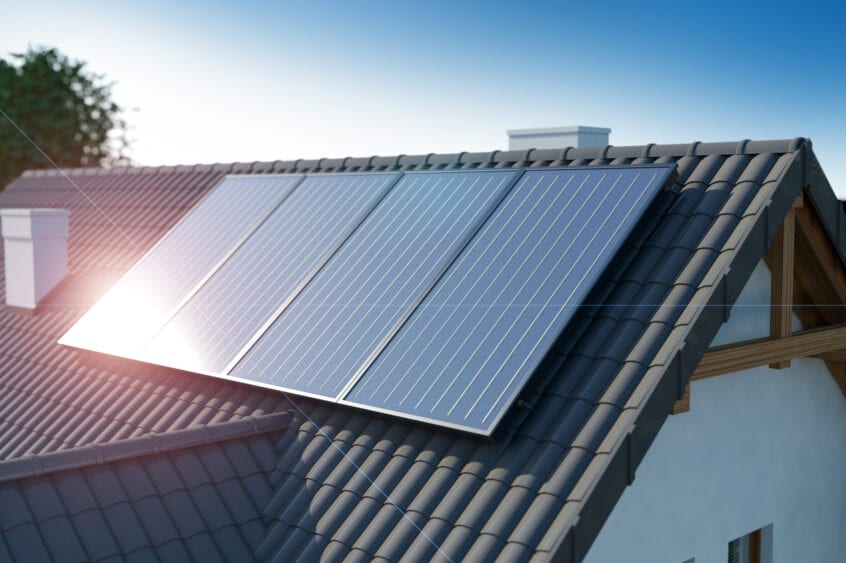It’s very important to make sure to calculate your expected sun hours when deciding on solar. Solar is beneficial to the environment, but it can also help you save money.
In essence, the expected sun hours are the true measurement allowing you to determine how much solar energy your panels will receive. Without this, you’re relying on assumptions.
In this article, you will learn about sun hours, as well as how you can calculate them on your own. So that you can make a safe and reliable decision for installing or not installing solar.
Whenever you’re ready to get your solar knowledge up, keep reading and get your notes ready.
What Are Expected Sun Hours?
While the sunlight quantity that your panels get is important, the best representation of the energy your panels can produce is measured in peak sun hours.
It’s important to note that peak sun hours are not equal to hours of daylight. Peak sun hours refer to how much exposure is used for energy production in any given area during an average day.
An expected peak sun hours is an hour during which the sunlight intensity is at 1000 watts per square meter. The insolation or amount of solar radiation delivered by the sun is variable based on the time of day, presence of clouds and other conditions, and the position of the sun in the sky.
Peak solar radiation occurs at the solar noon. Thus, when the sun is at its highest point in the sky. The low angle of the sun at sunset or sunrise filters the sunlight more, resulting in less energy delivery to the surface.
Sun hours also increase during the summer due to the position of the sun in the sky. Finally, solar energy is higher near the equator because it’s closer to the sun.
While the panels might acquire about 7 hours of daylight, the average expected peak sun hours are about 3 hours. Weather is also an important factor. For instance, states like Florida or California can expect more sunny days, as well as more sun hours.
How Much Sun Is Needed?
Solar power is generated through the efficient process of harnessing solar energy. Solar panels, usually made of crystalline silicon and a mirrored system to maximize light, create a current when exposed to the light rays. Thus, making use of it to produce electricity.
Solar panels require direct contact with the rays to produce the most solar output. Even in bad weather, solar panels can absorb the energy but at a significantly decreased rate. A significant decrease is not uncommon.
To optimize the number of sun rays that your panels receive, they must face south and be installed at a location with no shading devising of other buildings or obstacles.
While a solar specialist can help you find the best panel placement, you can buy or rent a pathfinder or plot a sun chart to determine how many sun hours your panels will receive on an average day.
How to Calculate Expected Sun Hours?
The majority of the US averages at about 5 peak sun hours, but closer to 3 to be truthful. Many areas of the country experience fewer sun hours during the winter and more sun hours in the summer, but this does not apply to states with stable weather.
Knowing the seasonal and yearly peak sun hours average is very helpful for deciding if solar panels are even worth your investment at this time. An insolation map can show you how much solar energy is being received in your location on an average day during the worst month.
Variable lists and charts have collected data for the entire North Americas, including the seasonal and monthly averages. This can be used to determine the average peak sun hours that your panels will receive.
If you want to assess the exact quantity of insolation that your panels can get, you will need to make your own meter or buy an insolation meter. When ready, place the meter in direct sunlight and wait for the results.
It will give you the facts in regards to the solar power supply, temperature, and light intensity. After this, you can use a cost calculator to find out how much you will be saving by going with solar.
Benefits of Solar
Whether you’re a business, homeowner, or commercial property, electric costs will make up a large part of your expenses. With a solar system, you can generate free power for the entire lifecycle of the system.
Even if you don’t produce all of the energy you consume, it will still reduce your utility bill and you will save money.
Solar panels are not a liability, they’re great as an investment with returns competing against more traditional investments like bonds and stocks. Thanks to the savings, the average homeowner will pay off their system in about 9 years and see a return on investment.
One of the most evident benefits is the ability to hedge the prices of utilities. In the past decade, residential costs have gone up by about 3% each year. By investing in solar, you can fix your rate and protect against unpredictability.
If you’re a business with cash flow fluctuation, going solar will help you forecast and manage your expenses.
Solar Services for You
Now that you know how to calculate expected sun hours, you are well on your way to determine if solar is even worth it for you. In any case, solar is useful for the most part, but some people might realize the benefits are not enough.
If you’re interested in calculating your expected sun hours, installing solar panels, and getting the best tech but you don’t want to burden yourself, get in touch with us and we will happily take the load off your shoulders.

